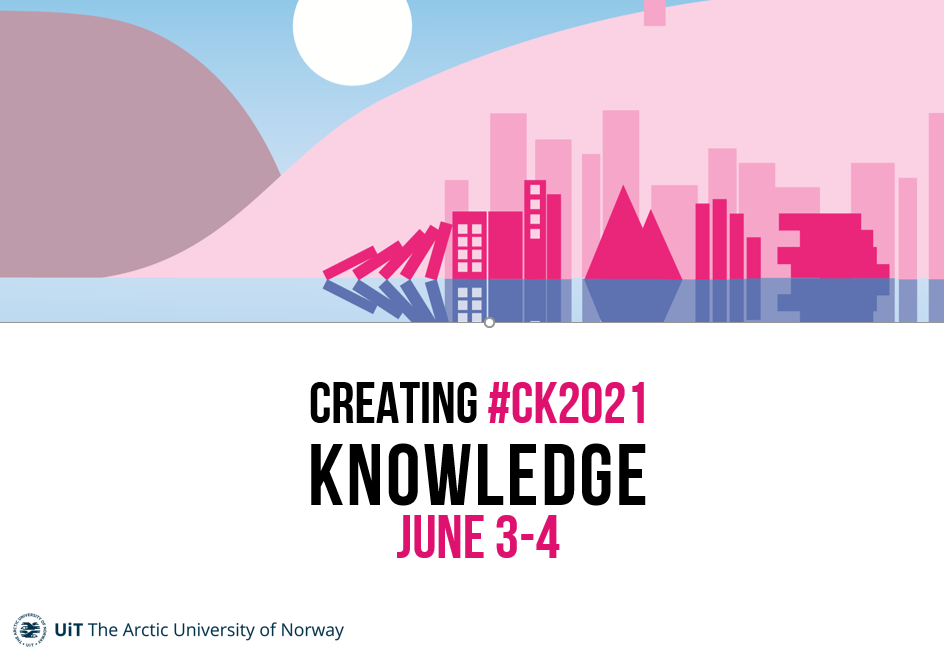Library–faculty collaboration in the light of a business administration bachelor’s program –“A Scientific Wave”
DOI:
https://doi.org/10.7557/5.5838Keywords:
media and information literacy, librarian-faculty collaboration, curriculum, business administration, degree projectAbstract
This paper elucidates the process of creating and maintaining a successful librarian-faculty partnership which originally was intended as a quality improvement tool for a bachelor program in business administration at University West, Sweden. In 2012, after receiving criticism from the Swedish Council for Higher Education regarding the learning outcomes of students’ information literacy skillswithin the field of business administration, the process of regeneration started. A quality improvement process called “A Scientific Wave” was initiated to support the student's development regarding skills in critical and analytical approaches, presentation techniques and media and information literacy skills. The Scientific Wave includes different quality aspects and applies a holistic approach to improve educationquality and accentuate progression of knowledge throughout all courses of the program. Furthermore, work-integrated learning, WIL, is applied as an educational and pedagogical model throughout the program to reinforcethe link between work life and learning-theory and practice. Earlier research statesthat successful integration of media and information literacy in higher education should be based on close collaboration between librarians and discipline faculty, strategic anchoring and visualization in curriculums, syllabi, course objectives and examinations, and developed in line with the mission of the university. The Scientific Wave is here viewed as a co-creative continuous process based on the separate but still complementary skills of librarians and faculty to provide students with tools for critical and creative thinking in today’s digital society.
Metrics
References
W. B. Badke, “Can’t get no respect: helping faculty to understand the educational power of information literacy,” The Reference Librarian, vol. 43, no. 89-90, pp. 63-80, 2005. https://doi.org/10.1300/J120v43n89_05
S.S. Brasley, “Effective librarian and discipline faculty collaboration models for integrating information literacy into the fabric of an academic institution,” New directions for teaching and learning, vol. 114, pp. 71-88, 2008. https://doi.org/10.1002/tl.318
C. Black, S. Crest & M. Volland, “Building a successful information literacy infrastructure on the foundation of librarian–faculty collaboration”. Research strategies, vol. 18, no. 3, pp. 215-225, 2001. https://doi.org/10.1016/S0734-3310(02)00085-X
E.L. Davis, K. Lundstrom & P.N. Martin, ”Librarian perceptions and information literacy instruction models”. Reference Services Review, vol. 39, no. 4, pp. 686-702, 2011. https://doi.org/10.1108/00907321111186695
N.H. Dewald, “What do they tell their students? Business faculty acceptance of the web and library databases for student research,” The Journal of Academic Librarianship, vol. 31, no. 3, pp. 209-215, 2005. https://doi.org/10.1016/j.acalib.2005.01.002
M. Dziluma, “The role of libraries in media and information literacy education, combating illiteracies,” In ICERI2016 Proceedings, The 9th annual International Conference of Education, Research and Innovation, 14-16 November, Seville, Spain, p. 5139, 2016. https://library.iated.org/view/DZILUMA2016ROL
P. Ellis, & M. Beck, “Collaboration between the library and business faculty,” Academic Exchange Quarterly, vol. 7, no. 1, pp. 297-301, 2003. Retrieved from: https://link.galegroup.com/apps/doc/A101943739/AONE?u=googlescholar&sid=AONE&xid=c11553a0 [Accessed: 2019-01-10]
E. Ford, B. Izumi, J. Lottes, & D. Richardson, “Badge it! A collaborative learning outcomes based approach to integrating information literacy badges within disciplinary curriculum,” Reference services review, vol. 43, no. 1, pp. 31-44, 2015. https://doi.org/10.1108/RSR-07-2014-0026
S.D. Garner, “High-level colloquium on Information literacy and Lifelong learning. Bibliotheca Alexandria, Alexandria, Egypt, November 6-9, 2005: report of a meeting,” 2006. Retrieved from: https://www.ifla.org/files/assets/information-literacy/publications/high-level-colloquium-2005.pdf
M. Gellerstedt, M., K. Johansson & T. Winman, “Work Integrated Learning: a Marriage Between Academia and Working Life,” Journal of Systemics, Cybernetics and Informatics, 13(6), 38-46, 2015. Retrieved from URL: http://www.iiisci.org/journal/sci/FullText.asp?var=&id=IP005LL15
A. Jumonville, “The role of faculty autonomy in a course-integrated information literacy program,” Reference Services Review, vol. 42, no. 4, pp. 536-551, 2014. https://doi.org/10.1108/RSR-07-2014-0020
M. MacMillan, & A. MacKenzie, ”Strategies for integrating information literacy and academic literacy: Helping undergraduate students make the most of scholarly articles,” Library Management, vol. 33, no. 8/9, pp. 525-535, 2012. https://doi.org/10.1108/01435121211279885
Y.N. Meulemans & A. Carr, “Not at your service: building genuine faculty-librarian partnerships,” Reference Services Review, vol. 41, no. 1), pp. 80-90, 2013. https://doi.org/10.1108/00907321311300893
C. A. Portmann, & A.J. Roush, “Assessing the effects of library instruction”. The Journal of Academic Librarianship, vol. 30, no. 6, pp. 461-465, 2004. https://doi.org/10.1016/j.acalib.2004.07.004
S. Smith & J.A. Edwards, “Embedding information literary skills as employability attributes,” ALISS Quarterly, 7(4), pp. 22-27, 2012.
D. Raspa & D. Ward, The Collaborative Imperative: Librarians and Faculty Working Together in the Information Universe. Chicago: Association of College and Research Libraries, 2000.
A. M. Robinson & K. Schlegl (2004). “Student bibliographies improve when professors provide enforceable guidelines for citations,” portal: Libraries and the Academy, v. 4, no. 2, pp. 275-290, 2004.
R. Stubbings & G. Franklin, “Does advocacy help to embed information literacy into the curriculum?: a case study,” ITALICS, vol. 5, no. 1, pp. 1-11, 2006. https://doi.org/10.11120/ital.2006.05010004
L. Torres & S. Jansen, “Working from the same page: collaboratively developing students' research skills across the university,” Council on undergraduate research quarterly, vol. 37, no. 1, pp. 26-33, 2016.
S. A. Weiner, “Institutionalizing Information literacy”, The Journal of Academic Librarianship, vol. 38, no. 5, pp. 287-293, 2012. https://doi.org/10.1016/j.acalib.2012.05.004
A. Whitworth, “Empowerment or instrumental progressivism?: analyzing information literacy policies,” Library Trends, vol. 60, no. 2, pp. 312-337, 2011. https://doi.org/10.1353/lib.2011.0039
N.D. Wijayasundara, “Faculty–library collaboration: a model for University of Colombo,” The international information & library review, vol. 40, no. 3, vol. 188-198, 2008. https://doi.org/10.1016/j.iilr.2008.06.004
Y.D. Wu & S. Lee Kendall, “Teaching faculty's perspectives on business information literacy,” Reference Services Review, vol. 34, no. 1, pp. 86-96, 2006. https://doi.org/10.1108/00907320610648789
A. Zanin-Yost, “Designing information literacy: teaching, collaborating and growing,” New Library World, vol. 113, no. 9/10, pp. 448-461, 2012. https://doi.org/10.1108/03074801211273920





